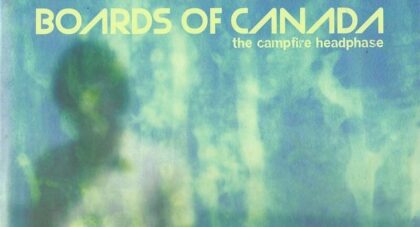This month, Craft Recordings releases an expanded deluxe edition of the late Terry Callier's remarkable debut album, The New Folk Sound of Terry Callier. This reissue includes five previously unreleased alternate takes (“900 Miles,” “Promenade In Green,” “It’s About Time” and “Be My Woman”) and two recordings making their vinyl debut (“Jack O’Diamonds” and “Golden Apples of the Sun”). "This record is like a river, ebbing and flowing," wrote Nik Rayne of the Myrrors for Aquarium Drunkard. "That may sound vague, but it’s probably the best way I can think to describe the music contained on the 1964 recordings that make up Terry Callier’s debut record The New Folk Sound of Terry Callier. Every time I put this music on I drift away, caught up in the slow, rolling rhythms and sad, rambling lyrics. Though Callier is best known for his run of unique psychedelic records in the early seventies, it’s his earliest material that has taken the strongest hold on my soul: a molasses-thick concoction of traditional American folksong and jazz, with Callier’s warm, deep croon practically floating across the stripped-back musical arrangements. Aside from Terry’s own finger-picked acoustic guitar, the record’s only other contributors are Terbour Attenborough and John Tweedle dueting on the bass."
The new edition includes new liner notes written by Aquarium Drunkard's Jason P. Woodbury. Presented here, an excerpt from those notes. The New Folk Sound of Terry Callier is available for pre-order now.
On July 29th, 1964, the 23-year-old Terry Orlando Callier hunkered down with supervisor Samuel Charters at Webb Recording in Chicago to record what would become his debut LP, The New Folk Sound of Terry Callier. Committing to tape a series of folk standards, the sessions paired Callier’s deep blue voice and acoustic guitar with two bassists, Terbour Attenborough and John Tweedle. Though the material retains its traditional roots, the peculiar configuration of instrumentalists, inspired by John Coltrane’s work with two bassists, nods toward Callier’s jazz leanings as does his forlorn phrasing. While Callier’s trailblazing run of records through the 1970s would more fully fuse jazz, soul, gospel and psychedelia, The New Folk Sound of Terry Callier conveys the promise and power of Callier in his earliest days. It’s a document marking a particular moment, capturing a young man in his element, his voice and songs timeless.
Only the good shit. Aquarium Drunkard is powered by its patrons. Keep the servers humming and help us continue doing it by pledging your support.
To continue reading, become a member or log in.


